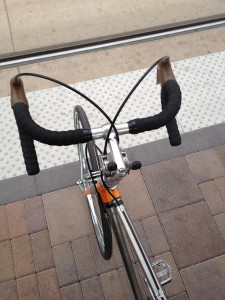 Quick bite for a Wednesday morning: There’s a piece that’s been making the rounds in the downtown Phoenix thought circles about how to get involved in the downtown Phoenix community to make it “suck less.”
Quick bite for a Wednesday morning: There’s a piece that’s been making the rounds in the downtown Phoenix thought circles about how to get involved in the downtown Phoenix community to make it “suck less.”
First things first: I’m not a fan of solutions journalism, that idea that journalism must always have some sort of solution to it. It just seems like it’s a new approach on feel-good reporting. I guess I’m old-school in the fact that good journalism must cast light to what’s going on. “Sunlight is the best disinfectant,” said the late Supreme Court Justice Louis Brandeis. So it’s up to us – the public citizenry – to decide what to do with that information.
The article in question is Want Downtown Phoenix To Suck Less? Here’s How To Get Involved by Antonia Noori Farzan. The premise of the article is that there are several downtown Phoenix advocacy groups that downtown-inclined individuals should join and then go to every single downtown meeting and talk to every single downtown elected or appointed official about design-related things.
There’s one fatal problem with that: The premise of Ms Farzan’s article seems to go on the failed notion that downtown Phoenix’s issues are design-related and that a bike lane here or tree there would suddenly cure our urban ills and make our downtown on par with those of Seattle, Denver, Minneapolis, or Philadelphia.
As this blog has noted with great regularity, that’s not the case. There are way too many macro issues that are ignored because, well, I’m not sure why. But they all stem back to one thing, something I tweeted about earlier today:
Want #dtphx to suck less? Encourage civic leaders to come up with an ACTUAL ECONOMIC DEVELOPMENT PLAN for central-city Phoenix.
— Edward Jensen (@edwardjensen) August 9, 2017
That’s the thing that’s missing. And this isn’t a new chorus or refrain of mine.
- In 2014, after Sprouts Farmers Market announced their corporate office moving from near Paradise Valley Mall to CityNorth, I wrote in Another Day, Another Strikeout, “What is the economic development strategy for downtown and midtown Phoenix? I fear to ask the next question, but I will: Is there one? I think it’s admirable that we are trying to have lots of incubator spaces and attract individual entrepreneurs but we need to ask: What is their economic impact compared to, say, the Sprouts Farmers Market headquarters?”
- In a 2014 edition of The Friday Five suggesting alternate urban talking points (which was in reaction to a feel-good design-focused thing going on that weekend), I wrote, “As we learn of other suburban cities or, in fact, suburban parts of Phoenix, taking jobs and economic development away from central-city Phoenix, we still think about how to make a better design for our streets, sidewalks, and bicycle lanes. That’s nice, to be sure, but I still maintain that if we don’t have the economic activity to support those physical amenities, then what’s the point?”
- There was a metric I created as well called The Eddie Number. The premise of that is to get a sense of economic headquarters in a downtown area compared to the rest of the metropolitan area. Also in 2014 (yeah, I wrote more back then), downtown Phoenix’s Eddie Number was -11.
So this is nothing new. This has been my common refrain but it’s gone on deaf ears.
Want downtown Phoenix to “suck less”? Get money and civic leaders back downtown.
 My friend Taz Loomans, the writer and former Phoenician, wrote a
My friend Taz Loomans, the writer and former Phoenician, wrote a